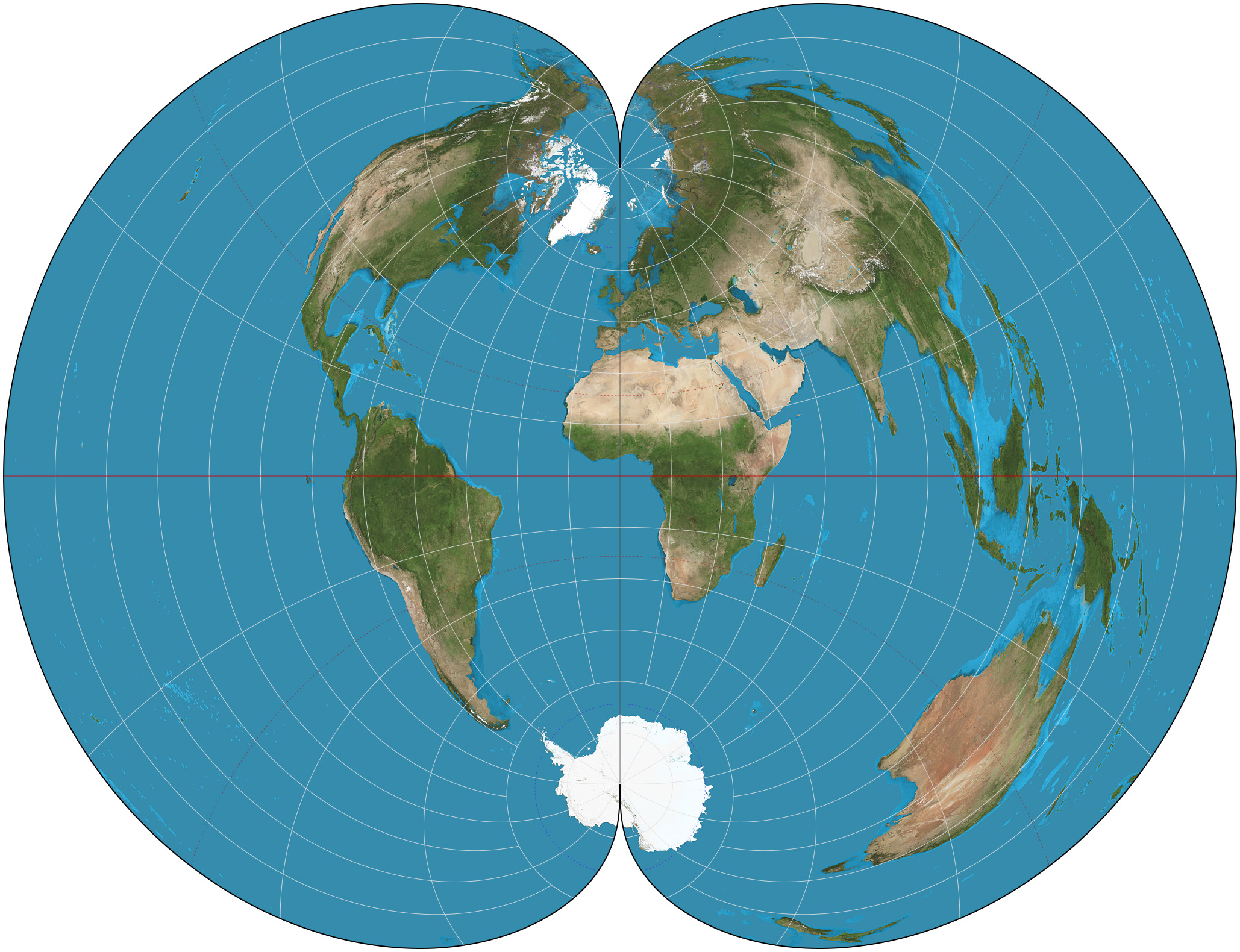Polyconic Projection Class on:
[Wikipedia]
[Google]
[Amazon]

 Polyconic can refer either to a class of
Polyconic can refer either to a class of
"The Dietrich-Kitada Projection"
Table of examples and properties of all common projections
from radicalcartography.net Map projections {{cartography-stub

 Polyconic can refer either to a class of
Polyconic can refer either to a class of map projection
In cartography, map projection is the term used to describe a broad set of transformations employed to represent the two-dimensional curved surface of a globe on a plane. In a map projection, coordinates, often expressed as latitude and longit ...
s or to a specific projection known less ambiguously as the American polyconic projection
The American polyconic map projection is a map projection used for maps of the United States and regions of the United States beginning early in the 19th century. It belongs to the polyconic projection class, which consists of map projections wh ...
. Polyconic as a class refers to those projections whose parallels are all non-concentric circular arcs, except for a straight equator, and the centers of these circles lie along a central axis. This description applies to projections in equatorial aspect.
Polyconic projections
Some of the projections that fall into the polyconic class are: *American polyconic projection
The American polyconic map projection is a map projection used for maps of the United States and regions of the United States beginning early in the 19th century. It belongs to the polyconic projection class, which consists of map projections wh ...
—each parallel becomes a circular arc having true scale, the same scale as the central meridian
* Latitudinally equal-differential polyconic projection
* Rectangular polyconic projection
* Van der Grinten projection—projects entire earth into one circle; all meridians and parallels are arcs of circles.
* Nicolosi globular projection—typically used to project a hemisphere into a circle; all meridians and parallels are arcs of circles.
A series of polyconic projections, each in a circle, was also presented by Hans Mauer in 1922,https://pubs.usgs.gov/pp/1453/report.pdf who also presented an equal-area polyconic in 1935.
Another series by Georgiy Aleksandrovich Ginzburg appeared starting in 1949.
Most polyconic projections, when used to map the entire sphere, produce an "apple-shaped" map of the world.
There are many "apple-shaped" projections, almost all of them obscure.
John J. G. Savard"The Dietrich-Kitada Projection"
See also
*List of map projections
This is a summary of map projections that have articles of their own on Wikipedia or that are otherwise notable
Notability is the property
of being worthy of notice, having fame, or being considered to be of a high degree of interest, signif ...
References
External links
Table of examples and properties of all common projections
from radicalcartography.net Map projections {{cartography-stub